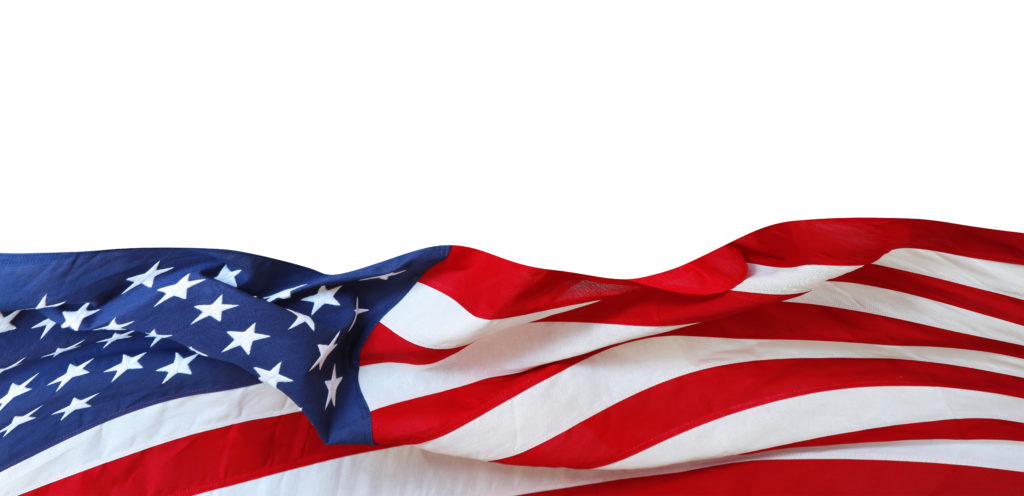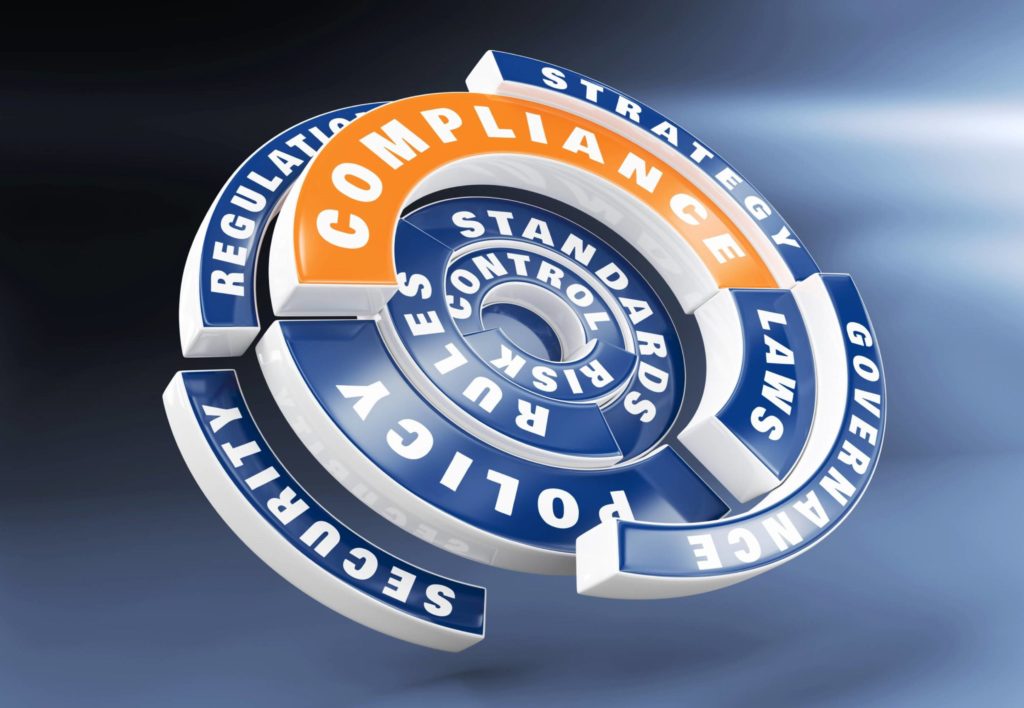Made in USA Standard
Made in USA Standard
What is Made in USA Standard
The U.S. Department of Agriculture’s (USDA) Agricultural Marketing Service (AMS), the U.S. Customs and Border Protection (CBP), the US Food and Drug Administration (FDA), and the Federal Trade Commission (FTC) all have responsibilities related to the use of country of origin claims.
While the FTC regulates voluntary claims of U.S. origin, foreign origin markings on imported products (e.g., “Made in China”) are regulated primarily by the CBP under the Tariff Act of 1930. USDA rules apply to both imported and domestically produced products.
What is Made in USA?
Made in USA is a term used to describe products that are manufactured or assembled in the United States. This term has gained significant importance as consumers are increasingly interested in buying products that are domestically produced.
CBP (Customs and Border Protection)
The CBP is responsible for enforcing the marking requirements for imported products. According to CBP regulations, a product can only be marked “Made in USA” if it is “all or virtually all” made in the United States. This means that the product's final assembly or processing must take place in the United States, and that the majority of the components must be of domestic origin.
FDA (Food and Drug Administration)
The FDA regulates the labeling of food, drugs, and cosmetics. The agency has set guidelines for the use of the Made in USA claim on these products. For food, the product must be made entirely from domestic ingredients, with the exception of minor flavoring, coloring, or similar additives. For drugs and cosmetics, the product must be manufactured in the United States, and all or virtually all of its components must be of domestic origin.
USDA (United States Department of Agriculture)
The USDA is responsible for regulating the labeling of agricultural products. For meat, poultry, and certain egg products, the USDA requires that the product be processed in the United States and that all significant ingredients be of domestic origin. For other agricultural products, the USDA allows the Made in USA claim if the product is processed in the United States and contains no or negligible amounts of foreign content.
FTC (Federal Trade Commission)
The FTC is responsible for enforcing the Made in USA standard for all other products. The agency has set guidelines that require a product to be “all or virtually all” made in the United States to use the Made in USA claim. The FTC considers a product to be “all or virtually all” made in the United States if all significant parts and processing that go into the product are of domestic origin and if the product contains only a negligible amount of foreign content.
In conclusion, the Made in USA standard is an important aspect of product labeling and is regulated by several agencies, including the CBP, FDA, USDA, and FTC. Each agency has set its own guidelines for products to be considered Made in USA, but they all require that a product be “all or virtually all” made in the United States to use the claim. As a consumer, it is important to be aware of these regulations and to look for the Made in USA label when buying domestically produced products.
Country of Origin of Imported Merchandise
Section 304 of the Tariff Act requires that all products of foreign origin imported into the United States be marked with the name of a foreign country of origin. Where an imported product incorporates materials and/or processing from more than one country, CBP considers the country of origin to be the last country in which a “substantial transformation” took place.
A substantial transformation is a manufacturing or other process that results in a new and different article of commerce, having a new name, character, and use that is different from that which existed prior to the processing. Country of origin determinations using the substantial transformation test are made on a case by case basis through administrative determinations by the Customs Service.
In-Depth Coverage: Marketing and Advertising Compliance
- Federal Trade Commission (FTC) Advertising Rules
- Made in USA Standard
- FTC Regulation on Environmental Claims
- Adverting and Marketing on the Internet
- Label Claims for Conventional Foods and Dietary Supplements
- Dietary Supplement Advertising: What is FTC's Truth-in-Advertising Law?
- USDA Country of Origin Labeling (COOL)
- FTC Rules & Regulations on Food Advertisement
Goods of US Origin and Made in USA
The fact that a product is of U.S. origin does not mean that it is permissible to promote that product as “Made in USA.”
Where CBP determines that a good is not of foreign origin (i.e., the good undergoes its last substantial transformation in the United States), there is generally no requirement that it be marked with any country of origin. For most goods, neither the CBP nor the FTC requires that goods made partially or wholly in the United States be labeled with “Made in USA” or any other indication of U.S. origin.
The fact that a product is not required to be marked with a foreign country of origin does not mean that it is permissible to promote that product as “Made in USA.” The FTC will consider additional factors, beyond those considered by the CBP in determining whether a product is of foreign origin, in determining whether a product may properly be represented as “Made in USA.”
How does the FTC evaluate “Made in USA” claims in product advertising, labeling and packaging?
- For most products: Unless the product is an automobile or a textile or wool product, there's no law that requires manufacturers and marketers to make a “Made in USA” claim. If a business chooses to make the claim, however, the FTC's “Made in USA” “all or virtually all” standard applies.
- For textile and wool products: Under the Textile and Wool Acts, these products must be labeled to identify the country where they were processed or manufactured.
- Imported products must identify the country where they were processed or manufactured.
- Products made entirely in the U.S. of materials also made in the U.S. must be labeled “Made in USA” or with an equivalent phrase.
- Products made in the U.S. of imported materials must be labeled to show the processing or manufacturing that takes place in the U.S., as well as the imported component.
- Products manufactured in part in the U.S. and in part abroad must identify both aspects.
- In addition, print and online catalogs must disclose whether a textile was made in USA, imported or both.
American Automobile Labeling Act
This Act requires that each automobile manufactured on or after October 1, 1994, for sale in the U.S. bear a label disclosing where the car was assembled, the percentage of equipment that originated in the U.S. and Canada, and the country of origin of the engine and transmission.
In-Depth Coverage: Country of Origin
- Country of Origin of Imported Merchandise
- Customs Ruling: Country of Origin
- Country of Origin: Food Products
- Country of Origin: Chemical and Pharmaceutical Products
- Country of Origin & Country of Manufacture: CBP vs. FDA
- Country of Origin: Substantial Transformation or Country of Assembly Test
- Country of Origin and Free Trade Agreement
- Country of Origin and Section 301
Express or Implied Made in USA Claim
Made in USA Claim may be made by either express or implied claims. “Made in USA” and “Our products are American made” would be examples of express U.S. origin claims.
In identifying implied claims, the Commission focuses on the overall net impression of an advertisement, label, or other promotional material. This requires an examination of both the representation and the overall context, including the juxtaposition of phrases and images, and the nature of the transaction. Depending on the context, U.S. symbols or geographic references, such as U.S. flags, outlines of U.S. maps, or references to U.S. locations of headquarters or factories, may, by themselves or in conjunction with other phrases or images, convey a claim of U.S. origin.
For example, assume that a company advertises its product in an advertisement that features pictures of employees at work at what is identified as the company's U.S. factory, these pictures are superimposed on an image of a U.S. flag, and the advertisement bears the headline “American Quality.” Although there is no express representation that the company's product is “Made in USA,” the net impression of the advertisement is likely to convey to consumers a claim that the product is of U.S. origin.
Standard for a product to be called “Made in USA” without qualification
For a product to be called Made in USA, or claimed to be of domestic origin without qualifications or limits on the claim, the product must be “all or virtually all” made in the U.S.
In-Depth Coverage: Importing Medical Device
All or Virtually All Standard
Consumers who see “Made in USA” on a product expect the claim to be truthful and accurate.
According to the Federal Trade Commission (FTC), “Made in USA” means that “all or virtually
all” the product has been made in America. That is, all significant parts, processing and labor
that go into the product must be of U.S. origin. Products should not contain any — or only negligible — foreign content.
The FTC has determined that unqualified U.S. origin claims should be substantiated by evidence that the product is all or virtually all made in the United States.
The FTC will find an advertisement or label deceptive and unlawful if it contains a representation or omission of fact that is likely to mislead consumers acting reasonably under the circumstances, and that representation or omission is material. In addition, objective claims carry with them the implication that they are supported by valid evidence. It is deceptive, therefore, to make a claim unless, at the time the claim is made, the marketer possesses and relies upon a reasonable basis substantiating the claim. Thus, a “Made in USA” claim, like any other objective advertising claim, must be truthful and substantiated.
The FTC Act gives the power to bring law enforcement actions against false or misleading claims that a product is of U.S. origin.
The enforcement applies to U.S. origin claims included in labeling, advertising, other promotional materials, and all other forms of marketing, including marketing through digital or electronic means such as the Internet or electronic mail.
Substantiating unqualified US Origin Claims
When a marketer makes a “Made in USA” claim, it should, at the time the claim is made, possess and rely upon a reasonable basis that the product is in fact all or virtually all made in the United States.
A product that is all or virtually all made in the United States will ordinarily be one in which all significant parts and processing that go into the product are of U.S. origin. It should contain only a de minimis, or negligible, amount of foreign content.
The final assembly or processing of the product must take place in the United States.
It is a prerequisite that the product has been last “substantially transformed” in the United States, as that term is used by CBP. Furthermore, even where a product is last substantially transformed in the United States if the product is thereafter assembled or processed (beyond de minimis finishing processes) outside the United States, the FTC is unlikely to consider that product to be all or virtually all made in the United States.
In-Depth Coverage: USDA-Regulated Products
- Importing USDA-Regulated Food Products
- Import Regulation by USDA Agricultural Marketing Service (AMS)
- Food Products – FDA or USDA Regulated
- Country of Origin Labeling
- Importing Animals, Animal Products, and Biologics into the US
- Importing Meat, Poultry, and Egg Products into the US
- Labeling and Marking of Imported Meat, Poultry, and Egg Products
- USDA National Organic Program (NOP)
- Agricultural Safeguards and USDA Licensing
In-Depth Coverage: Importing Food Products
- What is FDA Food Safety Modernization Act (FSMA)?
- Prior Notice of Imported Foods
- FDA Food Facility Registration
- Risk-Based Preventive Controls for Human Food
- Risk-Based Preventive Control for Animal Food
- Protect Food against Intentional Adulteration
- What is Foreign Supplier Verification Program (FSVP)?
- What is FSMA Produce Safety Rule?
Proportion of US Manufacturing Costs
In evaluating where the product is “made”, the FTC considers the percentage of the total cost of manufacturing the product that is attributable to U.S. costs (i.e., U.S. parts and processing) and to foreign costs.
Where the percentage of foreign content is very low, of course, it is more likely that the Commission will consider the product all or virtually all made in the United States.
Rather, the Commission will conduct this inquiry on a case-by-case basis, balancing the proportion of U.S. manufacturing costs along with the other factors, and taking into account the nature of the product and consumers' expectations.
Remoteness of Foreign Content
The FTC will look not only to the percentage of the cost of the product that the foreign content represents, but will also consider how far removed from the finished product the foreign content is. If a manufacturer buys a component from a U.S. supplier, which component is in turn made up of other parts or materials, the manufacturer may not simply assume that the component is 100% U.S. made but should inquire of the supplier as to the percentage of U.S. content in the component.
For example, in the context of a complex product, such as a computer, it is likely to be insignificant that imported steel is used in making one part of a single component (e.g., the frame of the floppy drive). By contrast, in the context of a product such as a pipe or a wrench for which steel constitutes a more direct and significant input, the fact that the steel is imported is likely to be a significant factor in evaluating whether the finished product is all or virtually all made in the United States.
In-Depth Coverage: Cosmetics Import Requirements
What is qualified Made in USA Claim?
A qualified Made in USA claim describes the extent, amount or type of a product’s domestic content or processing; it indicates that the product isn’t entirely of domestic origin.
Example: “60% U.S. content.” “Made in USA of U.S. and imported parts.” “Couch assembled in USA from Italian Leather and Mexican Frame.”
A qualified Made in USA claim is appropriate for products that include U.S. content or processing but don’t meet the criteria for making an unqualified Made in USA claim. Because even qualified claims may imply more domestic content than exists, manufacturers or marketers must exercise care when making these claims. That is, avoid qualified claims unless the product has a significant amount of U.S. content or U.S. processing. A qualified Made in USA claim, like an unqualified claim, must be truthful and substantiated.
U.S. origin claims for specific processes or parts
Claims that a particular manufacturing or other process was performed in the U.S. or that a particular part was manufactured in the U.S. must be truthful, substantiated, and clearly refer to the specific process or part, not to the general manufacture of the product, to avoid implying more U.S. content than exists.
Manufacturers and marketers should be cautious about using general terms, such as “produced,” “created” or “manufactured” in the U.S. Words like these are unlikely to convey a message limited to a particular process. Additional qualification probably is necessary to describe a product that is not “all or virtually all” made in the U.S.
In addition, if a product is of foreign origin (that is, it has been substantially transformed abroad), manufacturers and marketers also should make sure they satisfy Customs’ markings statute and regulations that require such products to be marked with a foreign country of origin. Further, Customs requires the foreign country of origin to be preceded by “Made in,” “Product of,” or words of similar meaning when any city or location that is not the country of origin appears on the product.
For further information of Made in USA Claim please refer to the following links to FTC Websites.
FDA-Regulated Products and Import Requirements
- What is Food Safety Modernization Act (FSMA)?
- Prior Notice of Imported Foods
- Food Facility Registration
- Risk-Based Preventive Controls for Human Food
- Risk-Based Preventive Control for Animal Food
- Standards for the Growing, Harvesting, Packing, and Holding of Produce for Human Consumption
- What is Foreign Supplier Verification Program (FSVP)?
- Protect Food against Intentional Adulteration
- FDA Regulated Product in Foreign Trade Zone (FTZ)
- Entry Review Process for FDA Regulated Products
- Country of Origin VS Country of Manufacture
- Foods Regulated by FDA or USDA: What is the Difference?
- Label and Labeling Claims for Conventional Food and Dietary Supplements
- What is USDA Country of Origin Labeling (COOL)?
- Import for Export of FDA Regulated Products
- FDA Regulated Products in Personal Baggage or Sending by Mail or Courier
- International Mail Facility (IMF) and FDA Regulation
- Importing Biological Product Regulated by CBER
- Importing Cosmetics and Voluntary Cosmetic Registration Program (VCRP)
- Importing Drugs into the U.S.
- Importing OTC Drugs into the U.S.
- Importing Veterinary Drugs into the U.S.
- Importing Tobacco Products into the U.S.
- Importing Medical Devices into the U.S
- Importing Food Products into he U.S.
- Importing Radiation-Emitting Products into the U.S.
Quick Link To U.S. Customs & Import Requirements
Customs Clearance and Import Requirements
- Entry of Imported Merchandise
- What is Section 321 Entry?
- What is Automated Commercial Environment (ACE)
- What is an Automated Broker Interface (ABI)?
- Who is Ultimate Consignee?
- What is Non-Resident Importer Program?
- Country of Origin of Imported Merchandise
- What is the Country of Assembly?
- What is the FDA's Country of Manufacture?
- Marking of Country of Origin on U.S. Imports
- What is Customs Bond?
- Reconciliation Prototype and Bond Rider
- Who Needs a Customs Broker?
- What is Customs Ruling Program?
- Classification of Imported Goods
- How is imported merchandise appraised?
- What are Import Quotas?
- What are Trade Remedy Duties?
- Antidumping Duty (AD) and Countervailing Duty (CVD)
- What is Foreign Trade Zone (FTZ)?
- What is Importer Security Filing (ISF)?
- What is Temporary Importation under Bond (TIB)
- What is In-Bond Process?
Guidance on customs & logistics solution for traditional and e-commerce importers and exporters
Customs Clearance
All goods imported into the U.S. are required to be declared to CBP. Our customs broker will help you stay in compliance with customs laws and regulations and clear your goods quickly and efficiently with our electronic Automated Commercial Environment (ACE) and Automated Broker Interface (ABI) Single Window System.
Freight Forwarding
Looking for a freight forwarding partner? To move your cargo from its current location through customs to its final destination we will partner with you to find the best way for your business. Whatever your transportation, logistics or customs clearance needs, we will do our best to customize a solution for your needs.
Warehousing & Distribution
Our warehouse facility offers great potential for serving as a regional hub with over 145,000 SF storage capacity close to Los Angeles Airport & Los Angeles/Long Beach Sea port. With our extensive experience in freight services, your import/export cargo will be handled quickly and effectively.
Section 321 Entry
Section 321 entry allows importing free of duty and tax for shipments imported by one person on one day having a fair retail value in the country of shipment not more than $800. We provide our resident and non-resident clients with dedicated ACE eManifest solutions for Section 321 entry of all modes of transportation.
E-Commerce
The Internet has made it easy to find and purchase items from almost anywhere in the world. Our e-commerce experts will help you find the right solution for your international transportation, customs clearance, and delivery to your final destination. We also provide value-added repackaging, warehousing and distribution services.
Non-resident Importer Program
If you want to sell your products in U.S. marketplaces, but you are a business owner located outside of the U.S., and do not have an entity or physical presence in the U.S., you need to be established as a Foreign Importer of Record before your goods can be imported into the U.S. We can help you.
































